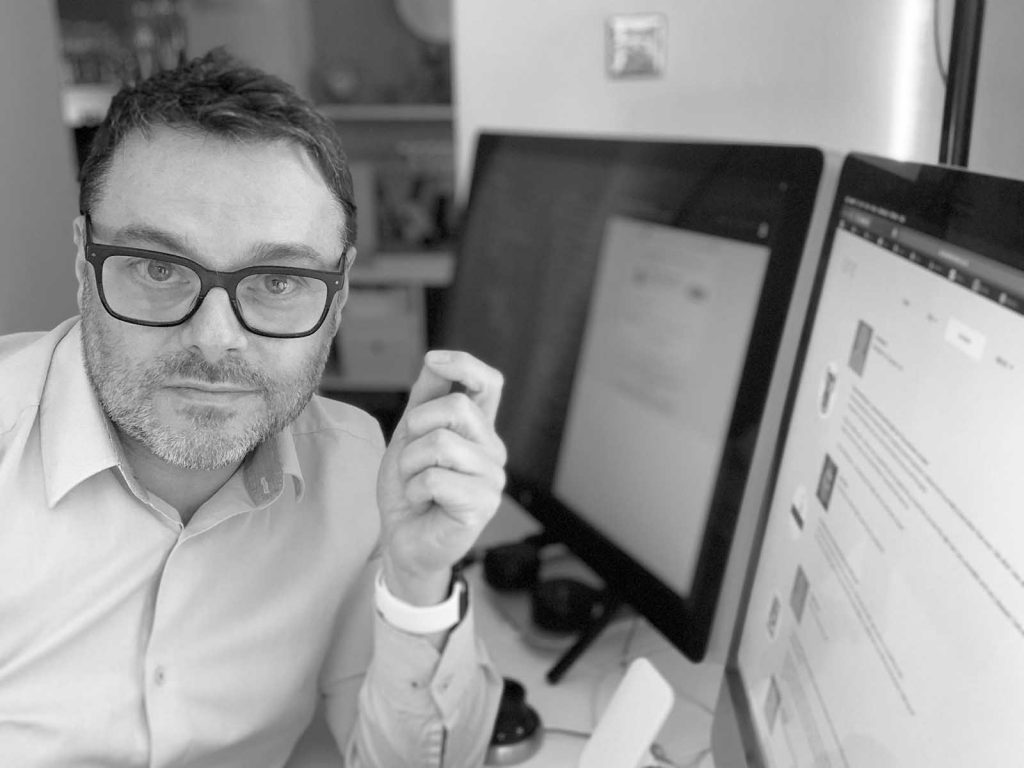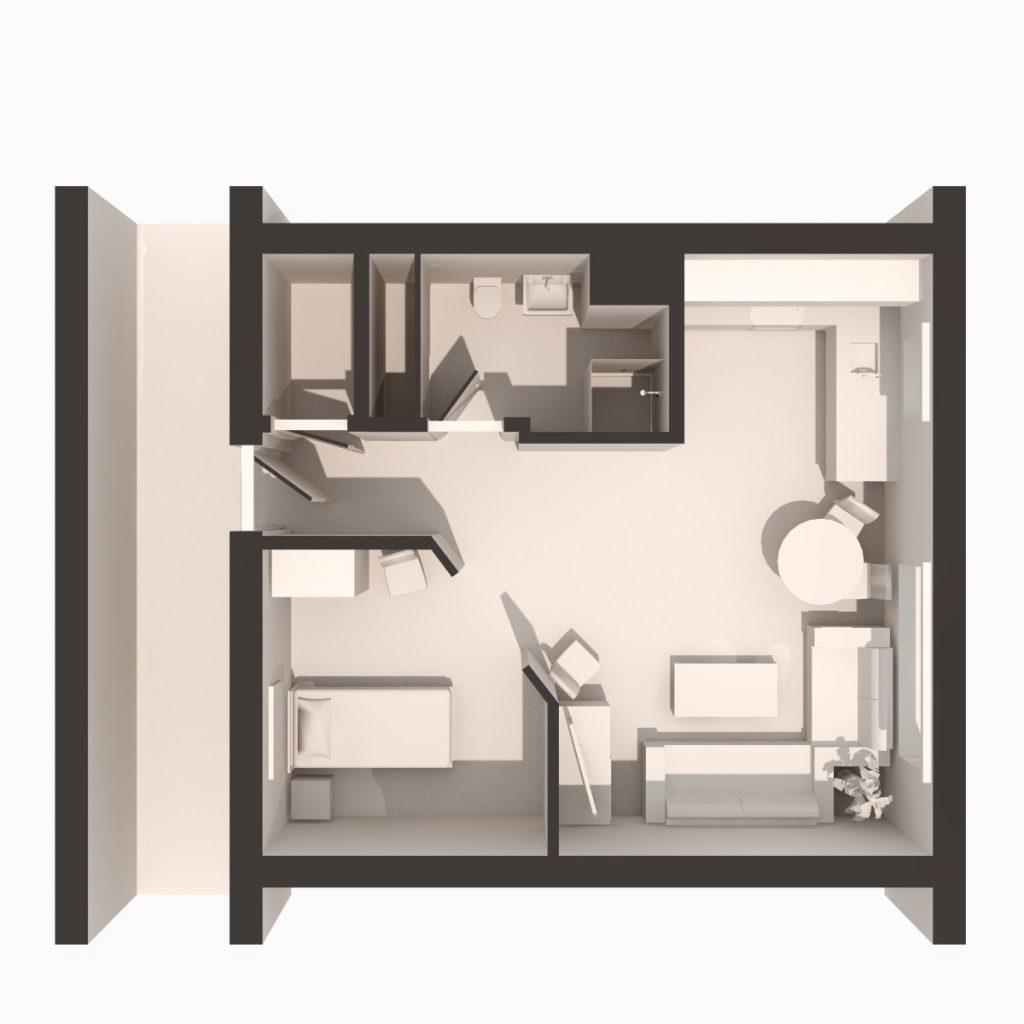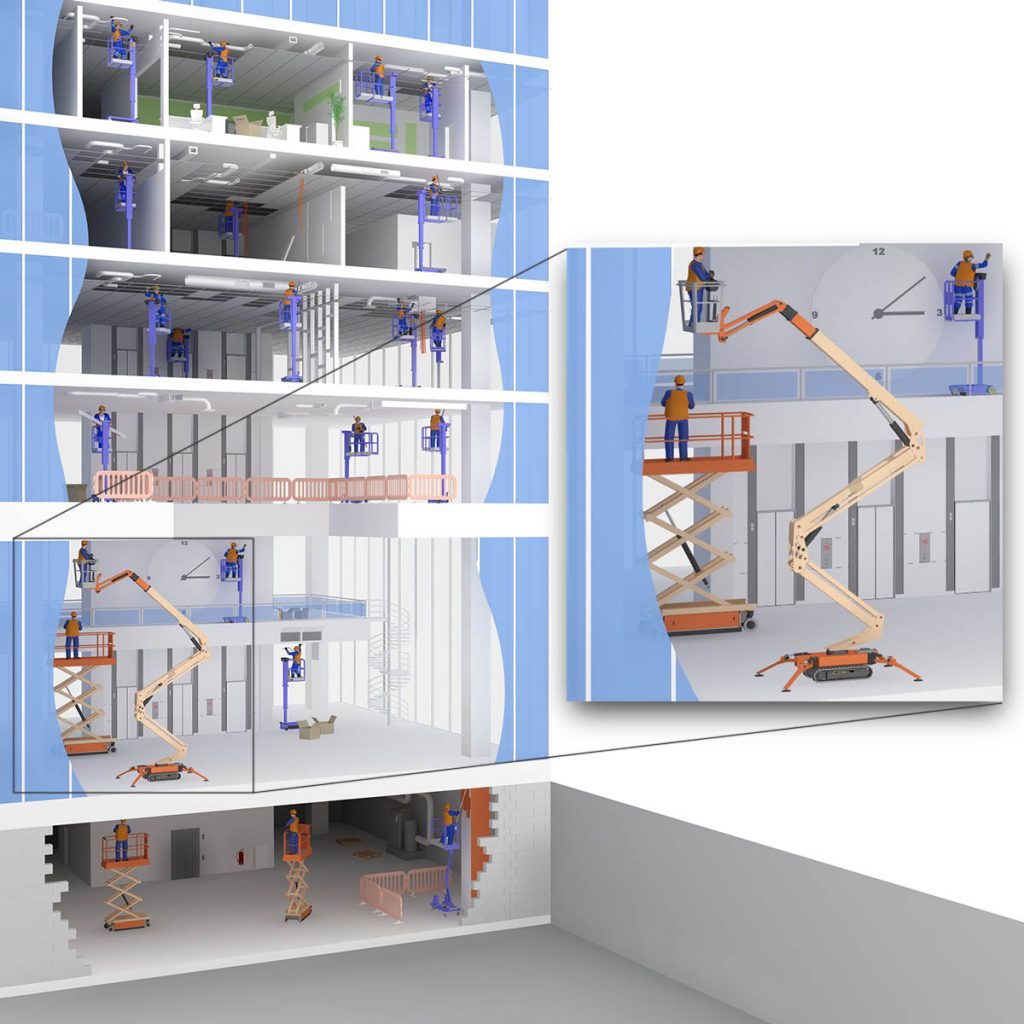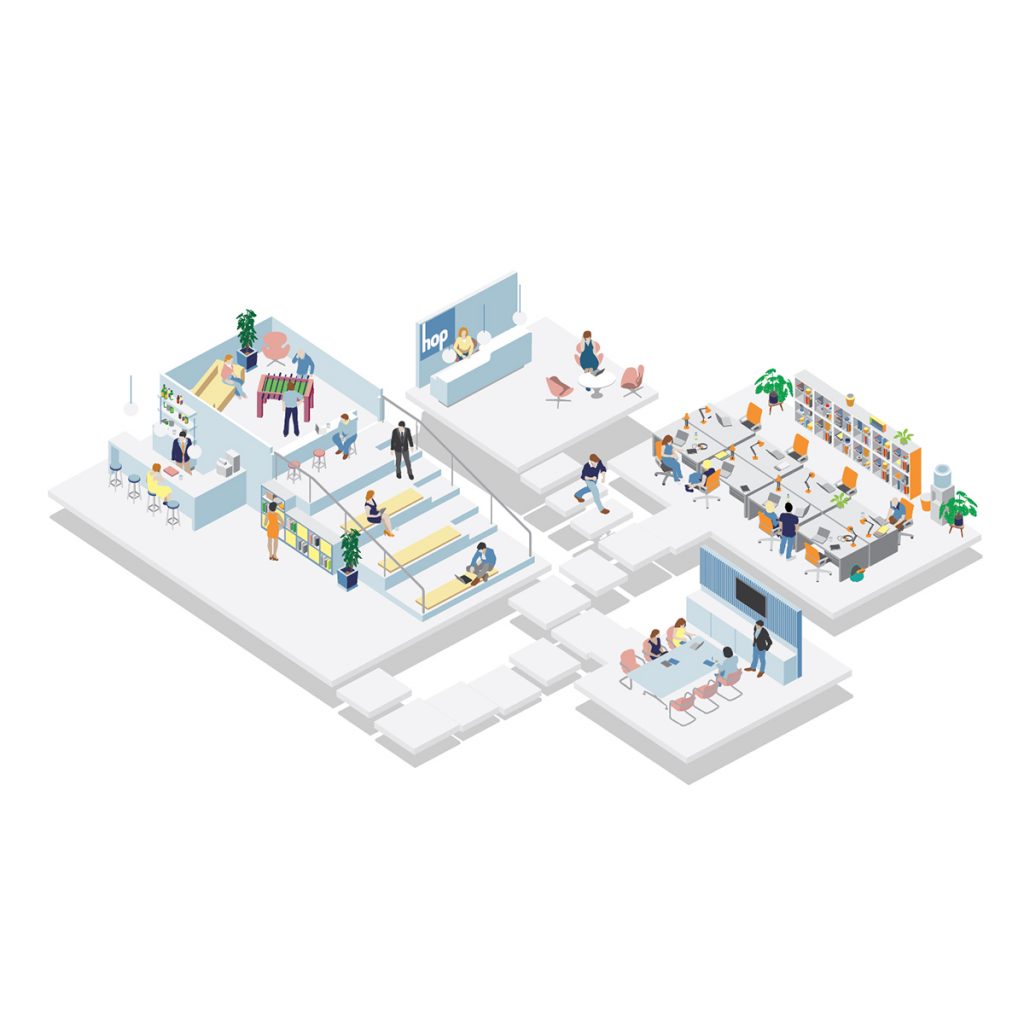A guide for locations to freelance.
This blog is about finding the right location to freelance. Including pros and cons at those different locations. You will find tips and hacks to help you find the best freelance location from my own personal experience and not other freelancers from other sites. I’ve been an established freelance illustrator since 1990. And in that time I guess I’ve field tested a few different places to work as a freelancer. So I hope this will make my blog “The right location to freelance” a genuine, unique and honest guide to freelancers and those thinking of going freelance.
In the last 4 decades, I’ve worked in many different situations from working at home in a shared room like a kitchen at the table, to having my own inner city fancy studio, and a few locations in between.
I think the best way to present this is by listing some situations, and adding some detail about each one of them, with some pros and cons. But feel free to contact me if you’ve any questions about finding the right place to freelance. I’ll do my best to help you.

1/ Working from Home on Kitchen / dining table
I guess a few freelancers have been here, it’s quite the go-to when you first start freelancing, and sometimes before you realise you are freelancing.
Pros: It’s quite a spontaneous situation, and costs nothing.
Cons: It can impact on others you live with and their use of the area you work from. Expect your work to be interrupted.
I didn’t do this when I first stared freelancing, but I have had situations where I needed to work this way.
One time especially was when the office I was renting was broken into and damage because the idiot who broke in and tried to burn the building down. I had to work from my living room for a month, before moving back into the building. Only then to return to share a loft area with another company while the building was under repair. I will expand on that later..
My experience was difficult because the desk space was physically limited, and the space wasn’t inspiring. I clearly remember feeling temporary, and didn’t commit to my work, I guess putting things off until I was back in the studio. Perhaps this was partly due to my unrealised perfectionism back then, and emotional impact of the fire. I remember it feeling slightly exciting at first but the novelty quickly work off.
I learnt from this, that having the right environment is important for motivation and creativity. Perhaps mentally I was on pause, I’m not sure, but it did have an impact on my ability to work. But one thing to take from working in a temporary place, be it a kitchen table or a loft area while office repairs are carried out. Is that it’s a good idea to have a fixed place to work.
2/ Working from Home in a Dedicated Area or Room
Yes, this is more like it. In fact this is where I currently work, and have done for half my freelancing life.
Pros: After the outlay of setting up your dedicated area or room, it’s quite a cost effective working space. Private and uninterrupted.
Cons: Depending on your setup, you will need to furnish it with things you need and like to work with.
Tip: Get your ergonomics set up properly, especially if you’re sat for hours at a time. I’m a strong believer in investing in things you use often. A chair is my top item of furniture… put simply look at the items you use, and prioritise the things you use the most… That cool looking work bag for meetings takes a back step to that quality coffee machine.
Ultimately you’re using a room that possibly was designed for another purpose other than an office.
I’ve used spare bedrooms, and currently I utilise a room in my basement as my illustration studio. But my home is not the norm, and a bedroom, conservatory or dining room are common for a home office/studio. Some new built homes have a purpose built office/study.
In the last 10 years I’ve down-sized my work area after moving away from traditional illustration techniques like watercolours and art that involved none digital art. I still sketch out my ideas, but that’s simply done on a sheet of A4 paper.
I still have a fair amount of desk space, and use two large monitors for my digital desktop area. I find it really handy having two screens, especially when looking at reference while illustrating.
I also use a tablet, (Wacom) the sort of device you draw on with a stylus (Pen) instead of a mouse. Using it for navigating my computer (desktop) and for illustrating on the computer. I also use a 3d mouse, that you can learn about in another blog.

3/ Desk-Space
Having access to a space in a professional environment is a very effective place to work as a freelancer. There are many advantages to working with other professionals around you, and it’s a great way to network… there’s so many positives doing it this way providing you are in the right sort of place.
Pros: Professional environment networking with people who are connected to your profession.
Cons: Rent is an expense to consider, and you will need to consider limitations on working hours and things like safety of your equipment.
For many it’s just a laptop, but remember you might need a safe cabinet or similar to store customer sensitive items unless you plan on carrying all your kit there and back every day.
The first time I had desk space was in 1993. The desk was in fact a drafting table, and a desk to the side with a cabinet. Perfect for an illustrator at the time. This was around the time Apple McIntosh equipped studios were becoming the norm for desktop publishing. And the Advertising agency utilised my illustration skills to their advantage. I made good friends of all ages, from professionals like copywriters, graphic designers and photographers to name just a few. I learnt new skills and made a lot of money too. I will share some of the skills on my websites skills page. Coming soon.
4/ Working On-site
Freelancing on location is quite like having desk-space without paying to be there, and only working for one customer.
Obviously this has limits, but can be quite a rewarding experience when you consider that you’re in the heart of your project. This should give you good access to reference and the opportunity to build a quality relationship with your client. I’ve done this a few times, and it’s surprising how different each environment can be.
Working with a group of people is quite interesting and a nice break from the monotony of working alone. These environments are as unique as the people you work with. In my experience I’ve worked on site probably 10 or so times, and they range in size from just one other person to 12 others in a team, within a company of thousands.
Some have been really educational and a rewarding time making new friends, and others have been challenging with people feeling insecure when a freelance illustrator is placed in their studio.
I’ll cover those challenges in a separate blog. Toxic places to freelance. Coming soon.
It’s been a positive experience most of the time. I often learn about my customers challenges and this helped me to tailor my service to them. I’ve made many friends this way, and remember nearly all my on-site experience much like a holiday.
Pros: Strong connection to customer that can pay dividends for the future with networking and friendships. Learn new ways to work, and knowledge about another industry.
Cons: Limited work flexibility for instance hours per day and you are working solely for the client during that time.

5/ Working in a Contracted Post.
I’ve done this 3 or 4 times, and it covers a few location options. You could be working from your home, but under contract for a customer. Or working in-house at their location. It all depends on the contract and what set up you have.
The take away from this, is that you will be limited to exclusively working for them. Even answering your mobile from other customers would be considered off limits. They are paying you for your time. However, you will have lunch breaks where you can catch up with any emails and voice messages.
When committing to a contract, I highly recommend you read it all, and be carful what you agree to. I’ve made mistakes where I was financially locked into the contract. Even when the customer was unprofessional, and made my life hell. I will never agree to such financial conditions again. And I highly recommend you don’t either… Don’t be shy to exclude parts of an agreement if you like.
6/ Private Office / Studio
I’ve had my own private studio on 3 occasions… once in an advertising agency called FSP advertising in Leicester where I rented a desk/room. The set up was kinda different than a simple room to rent, and I’ll explain more in a little while. I also rented a room and access to a boardroom and kitchen with a company called Charlton Birkett. And more recently I rented an office at Friar Gate Studios in Derby. All of these offices offered additional features, like the use of a Boardroom for meetings and a reception service.
Pros: Professional environment suitable to meet with customers and suppliers. Hold events, and keep a clear divide between work and personal life. It’s also a suitable location for work experience students and if allowed, you can rent a desk to another freelancer.
Cons: Expense of renting and utility bills. Commuting to the place of work is a cost to consider. Many offices have a contract for tenancy. Be careful of any fees for ending the rental contract early. Typically you’ll be below a certain size of company, so will not have a business tax to pay. But worth checking out.
I loved having my studio in the city centre of Derby. It was huge, and had floor to ceiling windows. It had Air Con and access to meeting rooms and use of receptionist. There were other creatives in the building, but one area where I thought it would be great didn’t work for me. That was the social interaction with others in the building. Many tenants didn’t mix as much as I thought, including myself. I don’t know why, but once the door to my office was closed. I was shut off. To make use of the location with other creatives, I would have to physically go knocking on doors. Something I wasn’t comfortable with.

There were a few people who didn’t have a problem with being so brave, but they were only a few. There was a cafe which seemed the perfect social area to meet and mix with others. But it was nearly always the same set of people.
If I was to do it again, I would have to put time aside each day or week, to knock on doors, and simply sit in the cafe and wait for people to chat to. This all takes time, and I could simply sit in a Cyber Cafe for a similar effect.
Tip if you’re in a building with separate offices, and want to network, but you’re also busy with work. Is to prop your office door open.
Then when people pass, they can simply pop their head in and say “hi”… it says “I’m ok to be disturbed…” and then when you’re busy, you can simply closed the door. This does work, but I was nearly at the end of a corridor, so only my 2 neighbours passed by, but they always said “Hello”.
Eventually I moved my business back home to my home studio, simply to save money… it was great having the office, but the additional work it brought in, paid for the rent and commuting costs.
7/ I Nearly forgot… Hot-desks or Communal Office Space.
I tried this for about 6 months. It was fine for meeting people, and having a change of scenery. And perhaps that’s the tonic for a freelancer looking for a spark. Funny I said “spark”, that was the name of the Hot desking I used.
I had a locker to leave stuff in when I wasn’t there, but it all seemed like a lot of effort for a temporary space. Remember I had a perfectly good studio at home, and I was just testing the hot desk for size. Perhaps I wasn’t fully committed, and that’s why I found it a novelty at first meeting new people, but then inconvenient and time consuming when I was busy. I guess if you’re struggling for space or finding it hard to focus working from home, this is a good idea.
Going back to the office in Leicester I mentioned earlier… the success of that office was that it had adjoining rooms. In other words, there were two doors leading to the main studio and the other to the Creative directors room. The room I rented became a kind of corridor. So people were always walking through. I can only think if it being simply like an open plan office. And it worked… I could if needed closed the doors for privacy, but 90% of the time they were open, much like a corridor. I felt part of the team, and although having to endure conversations and occasional interruptions, it was communal. Plus I had my own desk and space to make it a studio.
I think this is the best way to freelance. But if you can’t find a suitable creative company that has an adjoining room to rent out, or an open-plan studio, then perhaps the hot desk is worth a go… with a high turnover of users, you’ll meet a lot of people. Some Hot desk venues sell the space on multiple day rates. For instance you pre-book the day and time you use the hot desk rather than turning up fingers crossed there’s space available.

If you’re looking for more spontaneity, and you’re simply looking for 1 day a week to get some variety to your freelancing, you could always try a local venue that offers a space for people to sit drink their coffee and use their internet. I did this last Friday, at my local bar “The Binary” in Mickleover. They offer an endless coffee for around £7, and nice surroundings to write this blog.
A perfect change of scenery to spice up a freelancers day.
Until the next time… freelance on.
See social media icons below.
